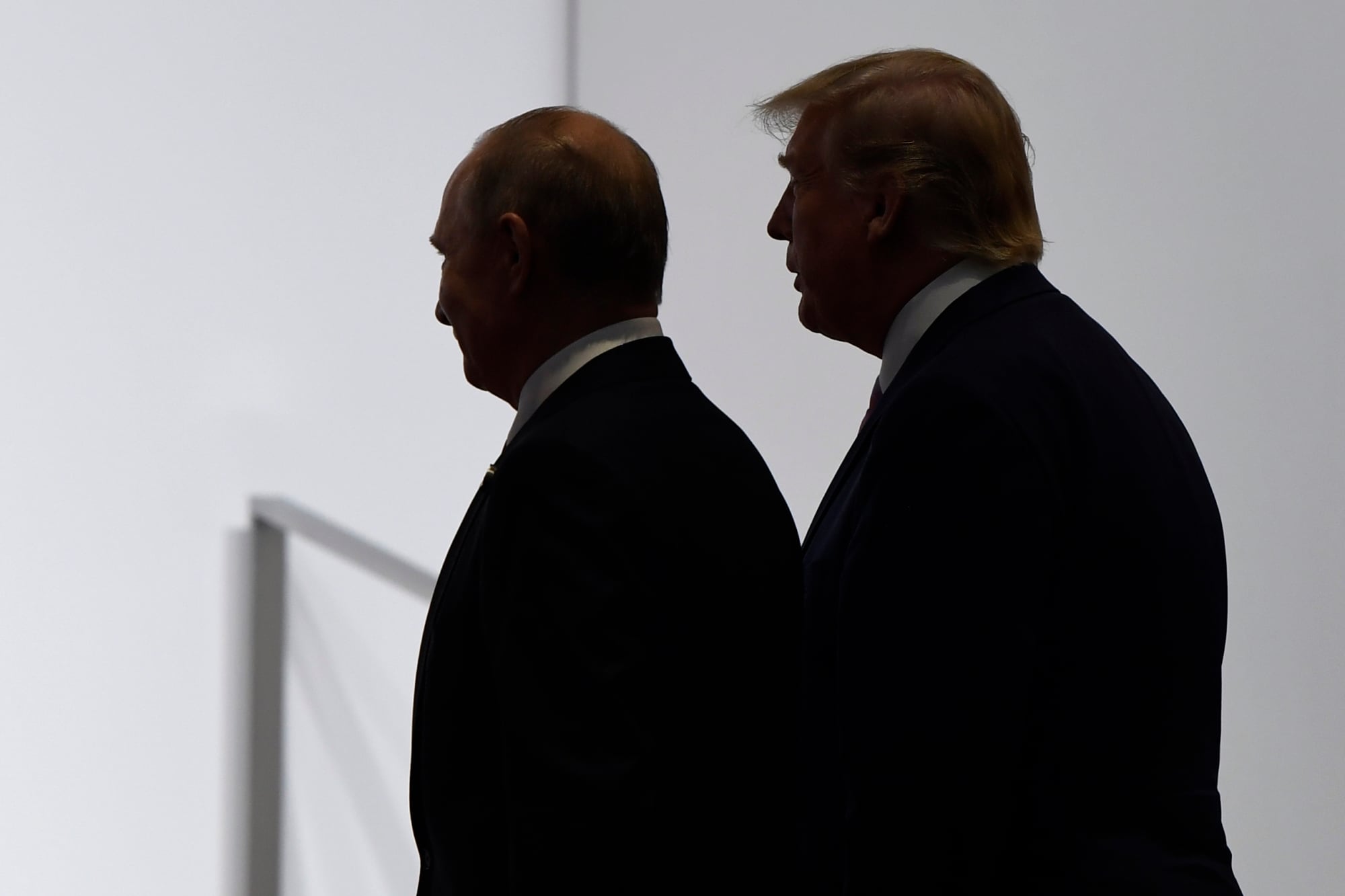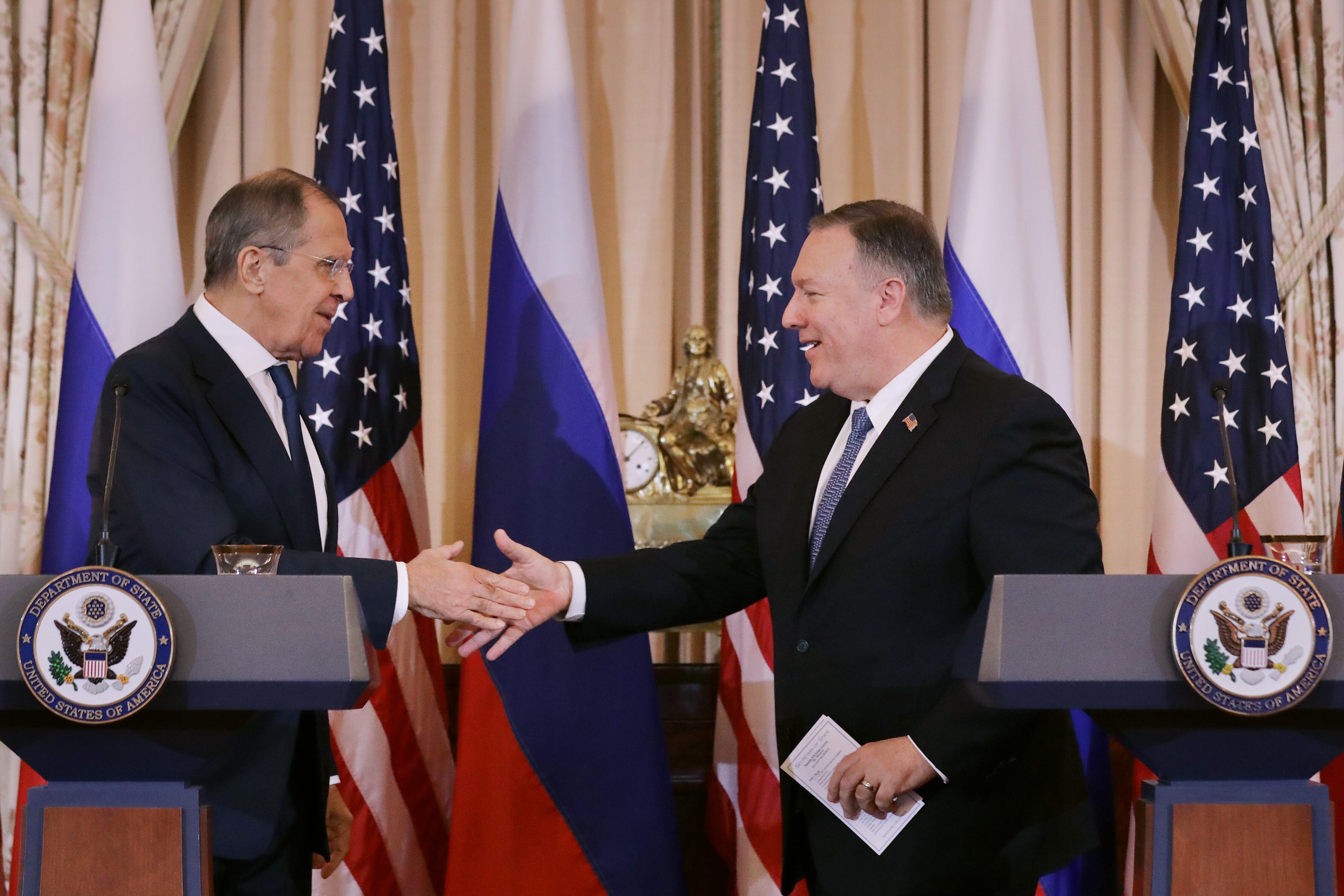WASHINGTON ― The New START nuclear pact’s demise could cost the Department of Defense as much as $439 billion for modernization, plus $28 billion in annual maintenance costs, the Congressional Budget Office said in a report published Tuesday.
That price estimate, as the United States and Russia remain at odds over the treaty, reflects a threefold increase in weapons production costs. With Washington and Moscow’s responses to the expiration of New START unclear, CBO explored several possible paths, including other less expensive options.
“If the New START treaty expired, the United States could choose to make no changes to its current plans for nuclear forces, in which case it would incur no additional costs,” the CBO study found. “If the United States chose to increase its forces in response to the expiration of the treaty, modest expansions could be relatively inexpensive and could be done quickly. Larger expansions could be quite costly, however, and could take several decades to accomplish.”
The New START treaty limits each country to no more than 1,550 deployed nuclear warheads and 700 deployed missiles and bombers. Signed in 2010 by then-U.S. President Barack Obama and then-Russian President Dmitry Medvedev, the pact would expire Feb. 5, but includes an option to extend it for another five years without needing the approval of either country’s legislature.
The analysis comes amid predictions of flattening defense budgets and as the United States and Russia concluded two days of arms control talks in Vienna last week with some signs of a possible willingness to extend the existing New START deal. A key sticking point is the U.S. demand to include China in any new treaty, even as China has repeatedly refused.
U.S. government leaders argue that any new nuclear arms limitation treaty should cover all types of warheads, include better verification protocols and transparency measures, and extend to include China, which has been increasing its own arsenal.
RELATED

Russia has offered an extension without any conditions. U.S. negotiator Marshall Billingslea indicated the U.S. was willing to talk about an extension but only if there were a politically binding framework for making changes to New START, which he called “deeply flawed.”
House Armed Services Committee Chairman Adam Smith, D-Wash., and Senate Foreign Relations Committee ranking member Sen. Bob Menendez, D-N.J., said a failure to renew would drive the U.S. toward a dangerous and unaffordable arms race, as Russia would use a U.S. exit to “quickly expand its arsenal.”
“Extending the New START Treaty for a full five years is clearly the right financial and national security choice,” they said in a joint statement. “America cannot afford a costly and dangerous nuclear arms race, particularly in the middle of our current financial, political, and health crises. We again call on the Trump Administration to extend the New START Treaty today.”
Arms control advocates have likewise warned against the U.S. allowing the treaty to lapse with no limits on their nuclear arsenals, after both Moscow and Washington withdrew from the 1987 Intermediate-range Nuclear Forces Treaty last year.
“Ever-increasing spending on nuclear weapons without an arms control framework that bounds U.S. and Russian nuclear forces is a recipe for budget chaos, undermining strategic stability, and damaging the health of the global nonproliferation regime,” said the Arms Control Association’s director for disarmament and threat reduction policy, Kingston Reif.
“Such an approach also flies in the face of longstanding bipartisan Congressional support for the pursuit of modernization and arms control in tandem.”
An expansion in nuclear weapons spending would likely place pressure on other parts of the national defense budget. CBO previously concluded the U.S. will spend $1.2 trillion over the next three decades on nuclear-weapons. Meanwhile, the Pentagon is not budgeting for New START’s expiration, according to a recent GAO report.
U.S. lawmakers of both parties are pressuring the White House to extend the pact. The House Foreign Affairs Committee’s Democratic chairman, Rep. Eliot Engel, and ranking Republican, Rep. Michael McCaul, sponsored legislation last year calling for a treaty extension until 2026.
New START is the latest in a series of strategic nuclear arms control treaties—following START I, START II, and the Moscow Treaty—between the United States and Russia (or the Soviet Union). CBO offered estimates of the cost of expanding to the limits under each of those previous treaties, but did not consider decreasing any components of the nuclear triad.
RELATED

An expansion from the current 1,550 warhead cap to 2002 Moscow Treaty cap of 2,200, would not exceed the cost of current plans, CBO found. That and remaining on the current course were least expensive options.
Expanding to 1993 START II Treaty limits, for forces that would carry up to 3,500 warheads, would either upload warheads on existing and next-generation forces at $100 million, while a more flexible approach would purchase enough additional next-generation delivery vehicles to reach START II limits using current warhead loadings at more than $114 billion and $3 billion annually.
Expanding to 1991 START I Treaty limits would require even more delivery systems and warheads. Minimizing delivery systems, it would cost more than $88 billion and more than $4 billion annually. Maintaining the current number of warheads on new delivery systems would cost as much as $439 billion and $28 billion annually.
CBO did not estimate the cost to produce, sustain and store new warheads under each treaty but said it could range from $15 million to $20 million each, which equates to $45 billion to $60 billion to reach the START I limit of 6,000 warheads.
This article was updated on Aug. 26, 2020, to include a joint statement from Sen. Bob Menendez and Rep. Adam Smith.
The Associated Press contributed to this report.
Joe Gould was the senior Pentagon reporter for Defense News, covering the intersection of national security policy, politics and the defense industry. He had previously served as Congress reporter.








